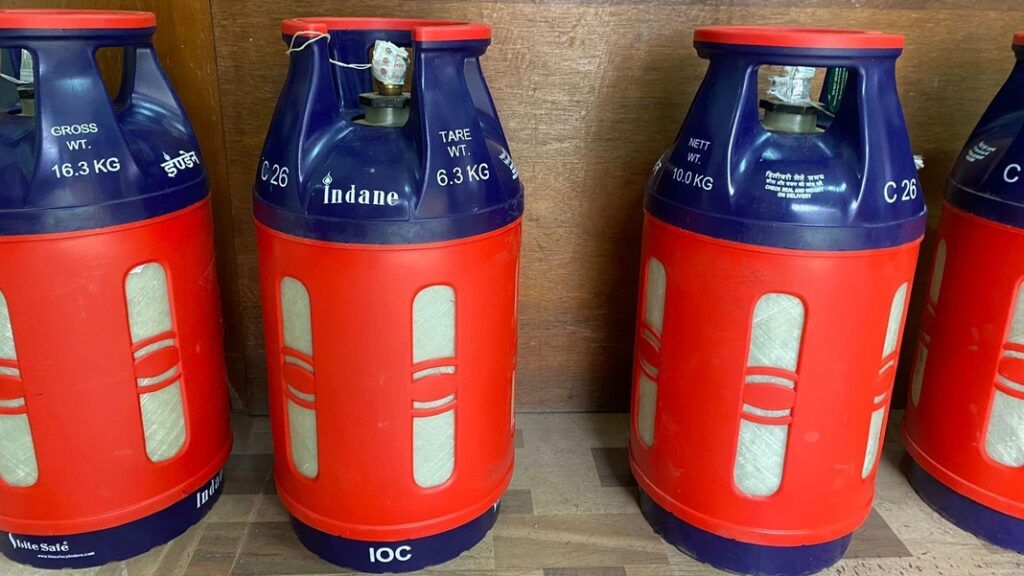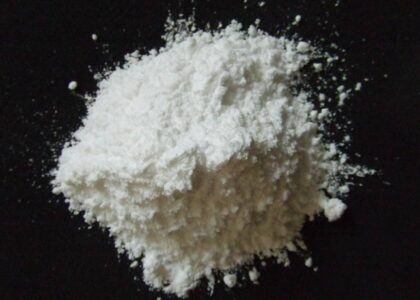According to a report by Future Market Insights, composite cylinders have emerged as an excellent alternative to traditional metal cylinders. These cylinders, crafted from plastic material, offer exceptional lightweight and ease of handling compared to their metal counterparts. The incorporation of plastic and glass fiber materials, either partially or fully, in the manufacturing of composite cylinders enables cooking gas suppliers and end-users to capitalize on the advantageous physical properties of these materials. This shift towards composite cylinders reflects an industry trend towards more efficient, lightweight, and user-friendly solutions in the realm of gas storage and transportation.
A composite cylinder is a three-layer cylinder made up of a blow-molded HDPE inner liner, covered with composite layer of polymer-wrapped fiber glass and fitted with a HDPE outer jacket. Composite cylinders are used as an alternative to steel cylinders.
In the Asia-Pacific, East Asia (APEJ) region is anticipated to take the lead during the forecast period. APEJ’s prominence in the composite cylinder market is attributed to its extensive manufacturing industry, which drives the demand for these lightweight and durable cylinders. The region’s manufacturing base underpins the need for efficient storage and transport solutions, making composite cylinders a preferred choice.
Following APEJ, North America is expected to be a significant player in the composite cylinder market. The region’s high per capita consumption of goods, coupled with the adoption of composite cylinders for various applications, contributes to its strong position in the market.
Request Sample Report: https://www.futuremarketinsights.com/reports/sample/rep-gb-5111
In contrast, Western and Eastern Europe, considered mature markets, are poised for moderate growth in the composite cylinder market over the forecast period. These regions may not exhibit as rapid expansion as some emerging markets but continue to rely on composite cylinders for various applications.
The Middle East and Africa (MEA) and Latin America regions are expected to experience slower growth in the composite cylinder market. These regions are gradually adopting these cylinders, albeit at a steadier pace.
Japan is also anticipated to make a notable contribution to the composite cylinder market, given its penchant for technological advancements and the adoption of innovative solutions.
These regional variations underline the global diversity and evolving preferences in the composite cylinder market, shaped by factors like industrialization, consumption patterns, and economic dynamics.
The transportation sector is one of the biggest users of composite cylinders, as CNG and LPG are increasingly being used as alternative fuels for vehicles. Composite cylinders are also used in other applications such as medical oxygen cylinders, firefighting equipment, and breathing apparatus.
One of the biggest challenges facing the composite cylinder market is the high cost of production. The raw materials used in the production of composite cylinders are expensive, which results in a higher cost for the finished product. However, the benefits of composite cylinders, such as their lightweight design and durability, make them a cost-effective option in the long run.
Another challenge facing the composite cylinder market is the lack of standardization in regulations across different countries. This can result in different safety standards and testing requirements, which can make it difficult for companies to sell their products in different markets.
Business Growth Drivers:
- Lightweight and High Strength: Composite cylinders are preferred in various industries due to their lightweight nature and high strength-to-weight ratio. This makes them suitable for applications where weight reduction is critical, such as aerospace, automotive, and transportation.
- Corrosion Resistance: Composite cylinders offer excellent corrosion resistance compared to traditional metal cylinders. This property makes them ideal for storing corrosive materials in industries such as chemical processing and oil & gas.
- Safety Regulations: Stringent safety regulations in industries such as healthcare, firefighting, and gas transportation have increased the demand for safer alternatives to metal cylinders. Composite cylinders, with their superior safety features such as explosion resistance and non-permeability, have gained traction in these sectors.
- Growing Adoption in Emerging Economies: Emerging economies are witnessing rapid industrialization and urbanization, driving the demand for various types of cylinders. Composite cylinders offer cost-effective and durable solutions compared to traditional alternatives, leading to their increased adoption in these regions.
- Technological Advancements: Ongoing advancements in composite materials technology have led to the development of cylinders with enhanced properties such as improved durability, impact resistance, and fatigue life. These innovations have expanded the application scope of composite cylinders across multiple industries.
- Environmental Concerns: With increasing environmental awareness, there’s a growing shift towards eco-friendly solutions. Composite cylinders, being recyclable and having a lower carbon footprint compared to metal cylinders, are being favored by environmentally conscious consumers and industries.
Industry Restraints:
- High Initial Cost: Despite their long-term benefits, composite cylinders often have a higher upfront cost compared to traditional metal cylinders. This cost barrier can deter potential buyers, particularly in price-sensitive markets or industries with tight budget constraints.
- Limited Market Penetration: Although composite cylinders offer numerous advantages, their market penetration is still limited in certain industries due to factors such as regulatory barriers, resistance to change, and a lack of awareness about the benefits they offer over conventional alternatives.
- Quality Control Challenges: Maintaining consistent quality standards in composite cylinder manufacturing can be challenging due to the complex nature of composite materials and manufacturing processes. Variations in material properties and production techniques may affect the reliability and performance of composite cylinders, posing a challenge for manufacturers.
- Perception and Trust: In some industries, there may be a perception that composite cylinders are less durable or reliable compared to traditional metal cylinders. Building trust and confidence among consumers and stakeholders regarding the safety and performance of composite cylinders is crucial for wider acceptance and adoption.
- Regulatory Compliance: Compliance with industry standards and regulations, especially regarding the transportation and storage of hazardous materials, is essential for composite cylinder manufacturers. Meeting these stringent requirements adds complexity and cost to the manufacturing process, potentially impacting market competitiveness.
Key Players:
Some major players of the composite cylinder market are
- Quantum Technologies,
- Worthington Cylinders,
- Hexagon Composites,
- LiteSafe Cylinder,
- Santek Equipments Pvt Ltd,
- Luxfer Gas Cylinders,
- Beijing Tianhai Industry Co.,
- Aburi Composites,
- ALAMAN Gas Cylinders Manufacturing LLC,
- Time Technoplast,
- Faber Industries S.p.A.,
- Shijiazhuang Yunhong Trade Co., Ltd. and
- Shanghai Qiaoyu Industrial Co., Ltd.
The research report presents a comprehensive assessment of the market and contains thoughtful insights, facts, historical data, and statistically supported and industry-validated market data. It also contains projections using a suitable set of assumptions and methodologies. The research report provides analysis and information according to categories such as market segments, geographies, types, technology and applications.
Buy Now/Purchase: https://www.futuremarketinsights.com/checkout/5111
Market Segmentations:
Composite cylinder market is segmented by material type, product type and by end use industry
Based on the material type
- Metal
- Steel
- Aluminum
- Carbon Fibers
- Glass Fibers
- High-density polyethylene (HDPE)
Based on the product type
- Type II
- Type III
- Type IV
Based on the end use
- Hotels & Restaurants
- Household Purpose
- Ballooning
- Gas Cutting
- Others
About Future Market Insights (FMI)
Future Market Insights, Inc. (ESOMAR certified, recipient of the Stevie Award, and a member of the Greater New York Chamber of Commerce) offers profound insights into the driving factors that are boosting demand in the market. FMI stands as the leading global provider of market intelligence, advisory services, consulting, and events for the Packaging, Food and Beverage, Consumer, Technology, Healthcare, Industrial, and Chemicals markets. With a vast team of over 5000 analysts worldwide, FMI provides global, regional, and local expertise on diverse domains and industry trends across more than 110 countries.
Contact Us:
Future Market Insights Inc.
Christiana Corporate, 200 Continental Drive,
Suite 401, Newark, Delaware – 19713, USA
T: +1-845-579-5705
For Sales Enquiries: sales@futuremarketinsights.com
Website: https://www.futuremarketinsights.com
LinkedIn| Twitter| Blogs | YouTube





